Many people may recognize ginger root in the store, or the powdered ginger spice in a bottle, and yet wouldn’t be able to identify a ginger plant. This exotic plant (Zingiber officinale) grows best in fertile, moist well-draining soil with warm temperatures. The stout, yellow rhizomes (ginger root) can be due in late summer to early fall. Ginger is a beautiful plant that can grow about 3 feet tall, with purple and pale yellow flowers that arise on separate shoots directly from the rhizome. Turmeric is a close relative of ginger.
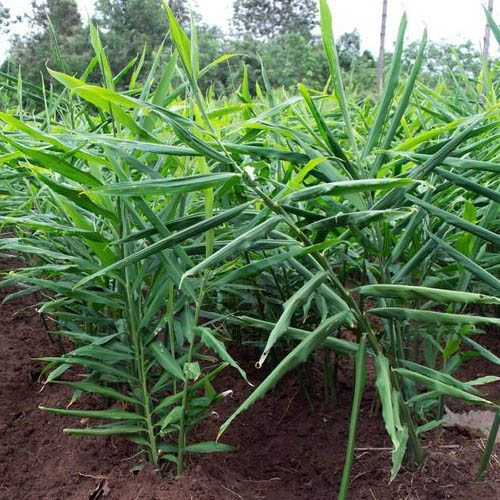
Planting & Growing Your Ginger
Choosing the proper spot to plant your ginger is crucial. The ginger plant prefers areas with morning sun only, or partially shady spots, ideally away from large roots. A sheltered place away from harsh winds may also be beneficial.
Ginger grows very well in containers and pots, make sure that the ginger roots have at least 12″ to grow. Whichever pot material you choose, terra-cotta or plastic, the base must have plenty of drainage holes.
The biggest issue to watch out when growing your ginger plants is rot. Rot can happen rather quickly with overly soggy soil. So you will need to ensure you don’t overwater the plant or improve drainage. Ginger plants need a lot of moisture, and they love humidity! Mulching the plants with a thick layer can help with moisture and humidity. Again, make sure not to make the soil too soggy.
Ginger is a slow-growing plant, so you need to be mindful of tending it to make sure it’s not overgrown by weeds or surrounding plants. And speaking of space, luckily, ginger doesn’t need much area to grow. Each rhizome produces only a handful of leaves out of the same area. If left unharvested, the rhizomes will slowly get bigger, and they don’t mind becoming crowded together.
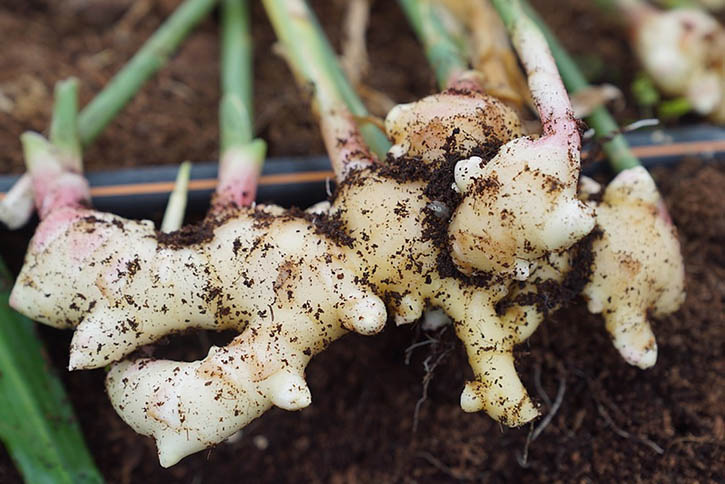
Harvesting Your Ginger Plant
Once your plant is approximately four or so months old, you can start to collect little bits from the rhizome without hurting the plant. The absolute best time to harvest ginger is when the leaves have died down, and you can dig up the whole thing, which could take eight to ten months. Ginger is a perfect plant to grow multiples of so you can have many rhizomes to dig up when you need it.
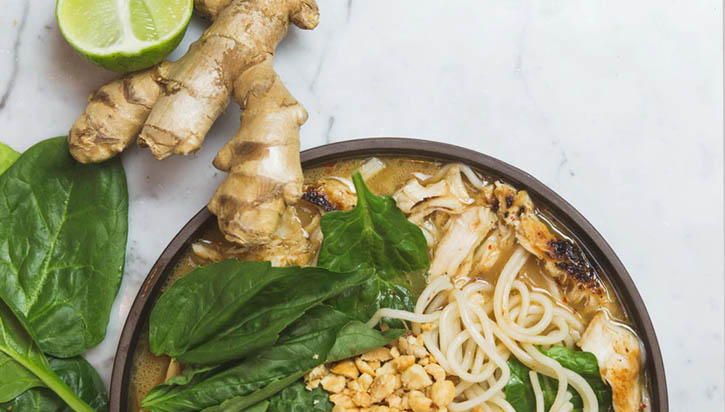
The Many Uses of Ginger
This rare and unusual herb has been in use for centuries in Asian cooking and traditional medicine. Confucious believed in eating ginger, however in moderation so as to not increase the internal heat of the body. As with a variety of elements in life, moderation is a key factor.
A Simple Ginger Tea Recipe
- Simmer 1 teaspoon of sliced or chopped fresh ginger root in 1 cup of water for 10 minutes.
- Optionally add lemon or lime slices.
- Strain.
- Can be taken daily, 1 to 2 cups or gargle to ease throat pain.
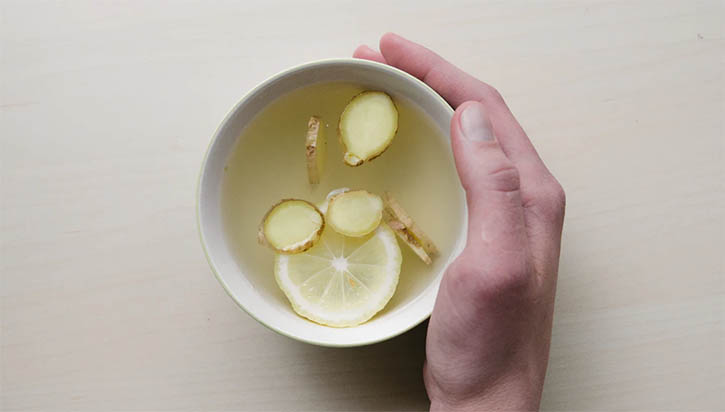
Ginger root has a distinctive flavor that has a variety of uses in all sorts of dishes: curries, pickled ginger, salads, stews, soups, chutneys, and more.
- Ginger root can be pickled and used for sushi or salads.
- The root can make a crystallized candy.
- The sliced root can be cooked or even eaten raw.
- The ginger root can make a soothing herbal tea.
- Ginger oil is used to make ginger ale.
Ginger is a potential remedy for the prevention of and treatment for nausea and other digestive issues. It is an effective anti-inflammatory. Ginger may help relieve cold symptoms as well as the effects of arthritis. A word of warning: pregnant women should use no more than 1500 mg per day of dried ginger. It may also interact with certain medications.
Please note that all information presented is based on the research of the historical uses of the herbs we sell. We are not providing our customers with medical advice, therefore consult a doctor or reputable herbalist before using any herb for medicinal purposes.
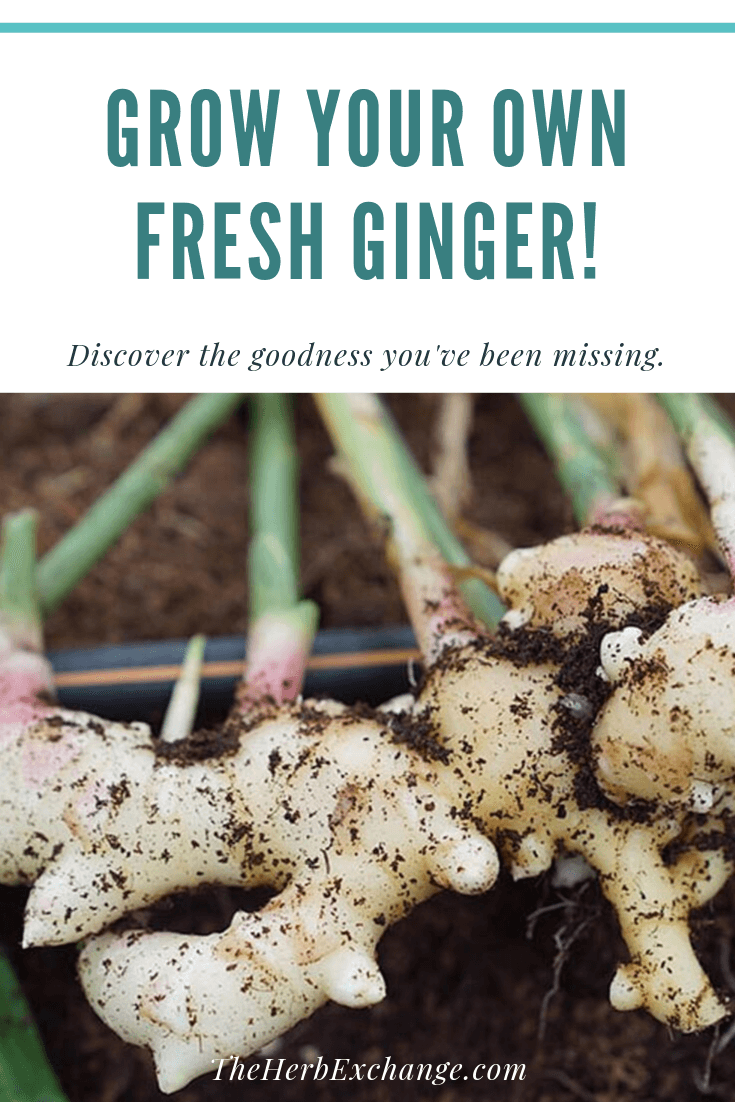

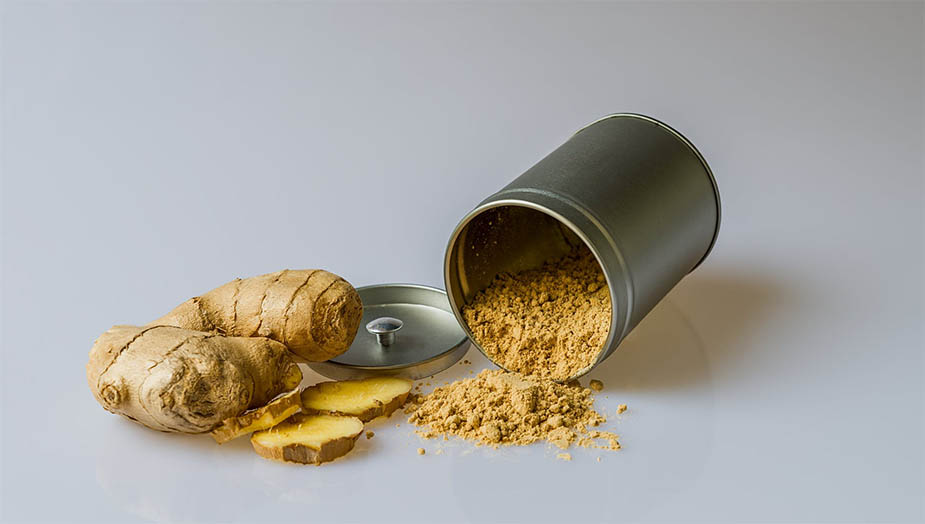
What is the best way to preserve ginger root? or maybe I should ask what are the ways to preserve it.
I’m re-asking the same question – what are the ways to preserve the root? Mine is now ready to harvest and ready to preserve and I’m waiting for some ideas on preserving it before I pick.
Preserve fresh ginger:
Put thin slices of ginger on to a sanitized mason jar with LOCAL Honey and some salt, nature’s natural preservative. Add fresh washed wedges of lemons into tea and in the warmer months ice the tea.
Or pit those slices or chopped fresh ginger in a sanitized mason jar with Apple Cider Vinegar and salt. Or what I like Brown Rice Vinegar. It’s a milder vinegar.
Can ginger shaving be used as plan fertilizer